 “we Live our lives, do whatever we do, and then we sleep—it’s as simple and ordinary as that. A few jump out of windows or drown themselves or take pills; more die by accident; and most of us, the vast majority, are slowly devoured by some disease or, if we’re very fortunate, by time itself. There’s just for this consolation: an hour here or there when our lives seem, against all odds and expectations, to burst open and give us everything we’ve ever imagined…” [225]
“we Live our lives, do whatever we do, and then we sleep—it’s as simple and ordinary as that. A few jump out of windows or drown themselves or take pills; more die by accident; and most of us, the vast majority, are slowly devoured by some disease or, if we’re very fortunate, by time itself. There’s just for this consolation: an hour here or there when our lives seem, against all odds and expectations, to burst open and give us everything we’ve ever imagined…” [225]
The Hours is a modern literary novel that cleverly adopts the backbone of Mrs. Dalloway. In this vivid portrait of one day in a fifty two-year-old woman life’s in twentieth century New York City, Clarissa Vaughan is preoccupied with the last-minute details of a party in honor of a beloved friend, an ailing poet who has won a literary prize. Richard, so is his name, who disappears into his terminal illness, his sanity, was Clarissa’s first love, a lost lover, a truest friend with whom, she ruefully reflects, if she has tried harder, might accompany each other, as planned, into old age.
Richard actually worried over questions of good and evil, and he never, not in twenty years, fully abandoned the notion that Clarissa’s decision to live with Sally represents, if not some workday manifestation of deep corruption, at least a weakness on her part that indicts (though Richard would never admit this) women in general. . .” [19]
As Clarissa buys the flowers, runs into an old acquaintance, goes home and continues on the day, the narrative evokes another time, place, and person. A young woman called Laura Brown, pregnant for a second time, mother of a three-year-old boy, is married to an amiable veteran of World War II. The date is 1949: she lives a slightly bewildered (maybe ungrateful) life which, in her own queasy thoughts, has welded into an unbeing, in a suburb of Los Angeles. She starts the day making a birthday cake for her husband, encounters this unexpected sexual excitement with another woman, and takes off into a little fugue. She drives into the city checks in a hotel room and reads Mrs. Dalloway.
…he (her son] appears, for the first time, to be suffering from an emotion she can’t read . . . He knows. He must know. The little boy can tell she’s been somewhere illicit; he can tell she’s lying. He watches her constantly, spends almost every waking hour in her presence. He’s seen her with Kitty. He’s watched her make a second cake, and bury the first one under other garbage in the can beside the garbage. He is devoted, entirely, to the observation and deciphering of her, because without her there is no world at all . . He will watch her forever. He will always know when something is wrong.” [192-193]
Another lead finds Virginia Woolf, fictional but plausible, in 1923 at her home in Richmond, recuperating. Pain still colonizes her nonetheless. She’s writing Mrs. Dalloway, at this point still called The Hours. Between her sister’s visit and Woolf’s attempt to slip away to London, she decides that Clarissa Dalloway will not die in the novel, someone else will. So all three women over the interval of time struggle with the same banal unraveling of the hours that make up our allotted time in life. On the course of one day, as the clock ticks away, each woman, with an inner faculty so sharp that can recognize the mysteries of the world, reflects on the choice she makes in their relationship and faces a common consequence, which becomes the delicate link that connects them together. These intricate layers will disentangle at the end to reveal the real person who intimately joins these three women together.
I don’t know if I can face this. You know. . . and then the hour after that, and the hour after that. . . But there are still the hours, aren’t there? One and then another, and you get through that one and then, my god, there’s another. I’m so sick.” [197]
Although The Hours repeats some of the darker events from Mrs. Dalloway, and at some points follow its cadence too closely (a literary parallel), Mrs. Dalloway is not a prerequisite to The Hours. The truth is, no amount of pedantic comparison-hunting, which I’m so tempted to undertake, would help readers understand the latter if they don’t understand the former already. What’s conspicuous is that the relationship between the two goes beyond allusion. The Hours is insidiously haunted by Mrs. Dalloway, to both readers and the characters themselves, because its theme (even the book as a whole evokes an underwater, echo, fussy quality) is the haunting of present lives by memories and books, by distant pasts and missed, unfeasible futures. Whether it’s Laura Brown’s fear as a failing mother, or Clarissa Vaughan’s regret of her relationship with Richard, or Sally’s realization that material living has cheapened the meaning of love, The Hours contemplates on that reflection is where many of our chances for happiness lie, in the memory not of what happened but of what was promised. Happiness passed us by without our knowing.
It had seemed like the beginning of happiness, and Clarissa is still sometimes shocked, more than thirty years later, to realize that it was happiness [with Richard]; that the entire experience lay in a kiss and a walk, the anticipation of dinner and a book . . . There is still that singular perfection, and it’s perfect in part because it seemed, at the time, so clearly to promise more. Now she knows: That was the moment, right then. There has been no other. [98]
228 pp. [Read/Skim/Toss]
Further Reading
Mrs. Dalloway – Virginia Woolf
Mrs. Dalloway vs. The Hours
Filed under: American Literature, Books, Contemporary Literature, Gay Literature, Literature | Tagged: American Literature, Books, Contemporary Literature, Gay Literature, Literature, Michael Cunningham, The Hours |





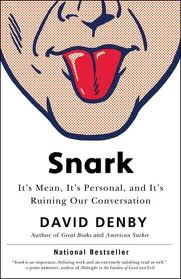








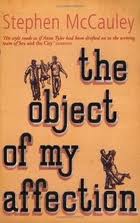





















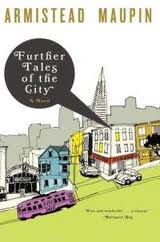









































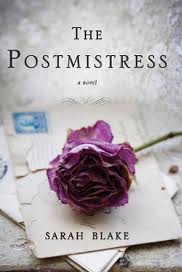












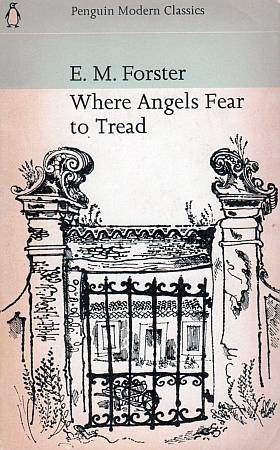















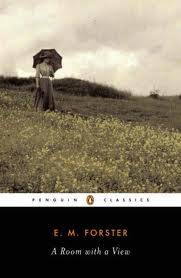








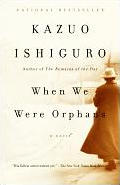

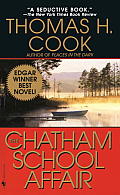




















































































































































I enjoyed your thoughtful take on this one. I agree that many of the pleasures of The Hours are difficult to appreciate w/o having read Mrs. Dalloway.
“What’s conspicuous is that the relationship between the two goes beyond allusion. The Hours is insidiously haunted by Mrs. Dalloway, to both readers and the characters themselves,”
Excellent post on the correlation between the two novels. I especially appreciate this great point that characters in The Hours have already read Mrs. Dalloway, and thus they can reflect on their life against the issues raised in Virginia Woolf’s novel. After all, there is no escaping time and the only way is to seize the moment and cherish the people in their lives.
I really loved this book. I read it after watching The Hours which I thought was really good. I really enjoyed your post and the comparisons that you made between Mrs. Dalloway and The Hours. Now I feel that I must read Mrs. Dalloway and then re-read The Hours.
After reading the prologue, wherein Virginia Woolf drowns herself, I became hooked, nearly possessed with this short little novel. I read it in the morning, during lunch breaks, at night, whenever I got the chance. For those four days I was completely at the mercy of The Hours. Why? Because its prose is lyrical and expertly crafted; my brain thrived on it. There is not one superfluous word. Every one counts and adds to the total effect. What I liked most was how Cunningham tied together three seemingly separate stories with grace; and I thought they WERE separate until the end of the book. I was surprised by the ending, and I enjoyed the strong feelings that the book, in its totality, invoked. Afterward, I went out and bought all of Michael Cunningham’s books. This is fine, fine writing and anybody who enjoys such writing will be rewarded.
Matt.. you may have convinced me. You gave such great insight, thanks.
Oh – I could read your reviews all day! They are so intellectual and inspiring.
I have not heard of this book before, but Mrs. Dalloway has been on my radar for about two years now. I simply must add this one to my TBR list as as a companion novel. Thank you for the powerful suggestion.
Now it seems that both must be read, which scares me a little, after your review of Mrs. Dalloway, because I’m not sure I could get through that one. I don’t think I’d be as patient as you. The Hours, on the other hand, I truly want to get my hands on. I’ve not seen the movie for this very reason.
I’m currently reading The Mrs. Dalloway Reader, which includes the full text of Woolf’s novel, as well as an introduction by Francine Prose and critical essays by various others, including Daniel Mendelsohn who discusses The Hours and who it relates to Mrs. Dalloway. It’s a very interesting article. I have one more critical essay before I get to the text of Mrs. Dalloway. I will certainly be reading The Hours next. Thanks for this review.
ted:
Yes, I am glad I have read Mrs. Dalloway before I read The Hours. I vaguely remembered The Hours when I read it back in 2001 because consider the fussy, dreamy nature of the prose, I also didn’t grasp the allusion to Woolf’s book.
John:
I thought for a long time wondering what The Hours means to say. Is it about love? Yes, but no. It’s not really a love story but love constitutes a bigger theme. It’s about reflecting on what has been irretriveably lost in life, and love is a big part of it.
Staci:
I’m glad you have decided to read both, or even better, back to back. They are both well-written books.
Ken:
I am both intrigued and absorbed by Cunningham’s lyrical prose. “There is not one superfluous word.” It’s so true, especially in depicting the characters’ interactions with one another. Sometimes you have to read between the lines to perceive the tension and speculative thoughts.
claire:
I am looking forward to reading your thoughts. 🙂
Molly:
You’re very welcome. I read The Hours many years ago without reading Mrs. Dalloway and thought I was missing something, especially when one of the characters in The Hours was picking up Mrs. Dalloway. Although they are literary parallel and the general consensus is that you won’t need to read it to understand the other, I suggest readers to read them both together. 🙂
Sandy:
Me too I still haven’t seen the film. I have in fact a huge backlog of films that I had originally held off until I have read the books. 🙂
Lisa:
Thanks for the shout out on The Dalloway Reader, which piques me. I need to go look for a copy. 🙂
I love this book and I find Cunningham a wonderful writer. I love the movie as well but thought Julianne Moore was far more deserving of the Oscar rather than Nicole Kidman and her nose.
Mae:
I have bought his other books and I cannot wait to read them. He’s very literary and poetic. I’ll read Blood and Flesh next.
My friends said the same thing about the Best Actress.
By the way, the book is a mere 228 pages, and yet I had to read it slowly, putting it down every now and then and letting the images wash over me. The author’s words became the echoing chime of a bell, stirring my own memories and introducing a new perspective. When a book can do all that it transcends being just a good story. It is a work of art. It’s a troubling book, and not pleasant to read. It deals with life and death and the hours of our lives. And it sheds light upon it all.
John:
It’s amazing how much emotion and feelings, along with the tight progression of the day’s event, are packed in a compact novel. I have found myself re-reading many passages over, and over again.
Matt — just wanted to share that I managed to pick up a copy of The Hours in the clearance section of Half-Price Books for $2.00!! If I had not read your blog this week, I would have missed this wonderful bargain. I will probably not have time to read it soon, but I am hopeful to read both Mrs. Dalloway and The Hours sometime this summer.
Thanks for the recommendation!
[…] The Hours reviewed at A Guy’s Moleskine Notebook […]
[…] Maugham 9. Maurice, E.M. Forster 10. The Go-Between, L.P. Hartley 11. Beloved, Toni Morrison 12. The Hours, Michael Cunningham 13. The Piano Teacher, Janice Y.K. Lee 14. Little Bee: A Novel, Chris Cleave […]
[…] Sticky Fifteen … on [200] The Piano Teacher …The Sticky Fifteen … on [195] The Hours – Michae…Melody on On CommentingBethany on […]
[…] Reviews: A Guy’s Moleskine Notebook; Serendipity; […]
[…] they have to say: transcending the plot and challenging values of our society. These books include The Hours by Michael Cunningham, Beloved by Toni Morrison, Maurice by E.M. Forster, and Giovanni’s Room […]
[…] saying what they meant to. Giovanni’s Room by James Baldwin, Maurice by E.M. Forster, The Hours by Michael Cunningham, Their Eyes Were Watching God by Zora Neale Hurston, Beloved by Toni […]
[…] [243] Howards End – E.M. Forster (11/13/09) [226] Rebecca – Daphne du Maurier (9/7/09) [195] The Hours – Michael Cunningham (3/30/09) [184] The Great Gatsby – F. Scott Fitzgerald (2/10/09) [113] The Gentleman in the […]